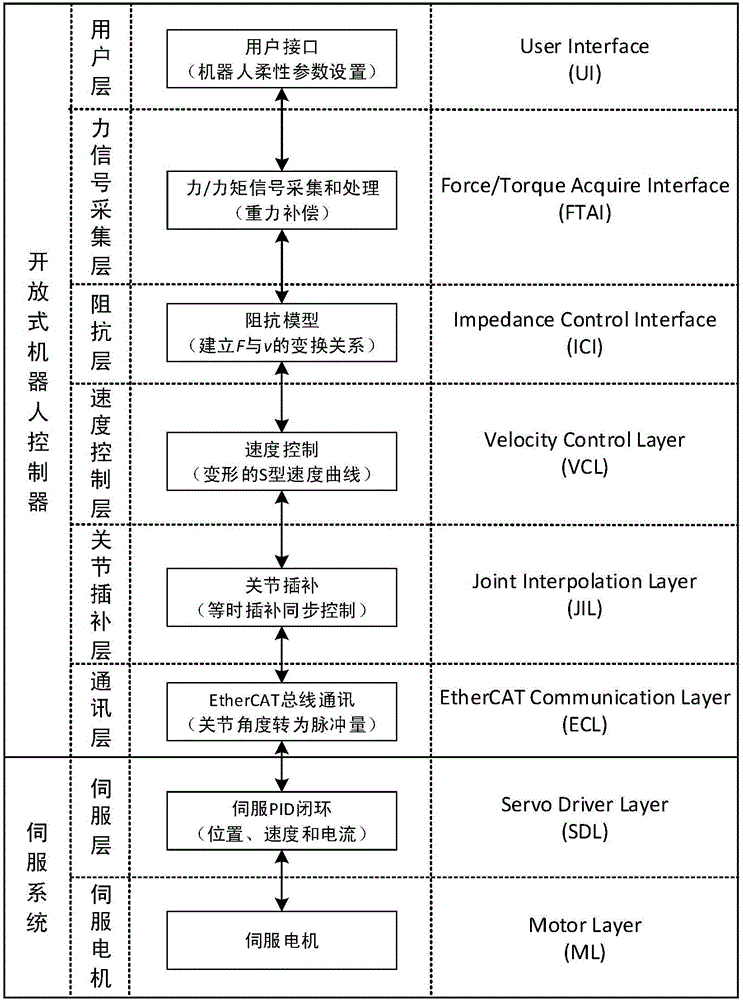Speed control method for high-accuracy traction teaching robot based on impedance model
A technology for teaching robots and impedance models, applied in the directions of digital control, program control, electrical program control, etc., can solve problems such as difficulty in teaching traction, poor real-time traction effect, and inability to control speed and acceleration, and achieve improvement. Real-time following effect, real-time tracking effect, effect of improving accuracy
- Summary
- Abstract
- Description
- Claims
- Application Information
AI Technical Summary
Problems solved by technology
Method used
Image
Examples
Embodiment Construction
[0036] The technical solution of the present invention will be further introduced below in conjunction with specific embodiments.
[0037] This specific embodiment discloses a speed control method of a high-precision traction teaching robot based on an impedance model, which includes the following steps:
[0038] S1: The robot controller collects the information of the six-dimensional force sensor, first filters the collected information, then performs gravity compensation, and finally obtains the deviation data from the expected force or the expected torque;
[0039] S2: According to the impedance model, the force deviation data or the torque deviation data is converted into the speed of the robot end moving in Cartesian space and the angular velocity of the axis rotation;
[0040] S3: Smoothly interpolate the motion according to the deformed S-shaped speed control curve, and obtain the corresponding position function, speed function and acceleration function;
[0041] S4: According to...
PUM
 Login to View More
Login to View More Abstract
Description
Claims
Application Information
 Login to View More
Login to View More - R&D
- Intellectual Property
- Life Sciences
- Materials
- Tech Scout
- Unparalleled Data Quality
- Higher Quality Content
- 60% Fewer Hallucinations
Browse by: Latest US Patents, China's latest patents, Technical Efficacy Thesaurus, Application Domain, Technology Topic, Popular Technical Reports.
© 2025 PatSnap. All rights reserved.Legal|Privacy policy|Modern Slavery Act Transparency Statement|Sitemap|About US| Contact US: help@patsnap.com



